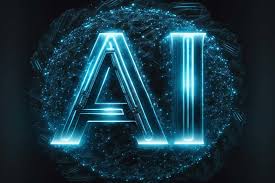4/5/2025
How AI Works: A Comprehensive Guide
Artificial Intelligence (AI) has become an integral part of modern technology, influencing industries like healthcare, finance, transportation, and entertainment. But how does AI actually work? This article provides a detailed explanation of AI, its underlying mechanisms, and the different types of AI systems in use today.
---
What is Artificial Intelligence (AI)?
AI refers to the simulation of human intelligence in machines that are programmed to think, learn, and make decisions. Unlike traditional software, AI systems can improve their performance over time by analyzing data and recognizing patterns.
Key Characteristics of AI:
-Learning: AI systems improve from experience (machine learning).
- Reasoning: AI can solve problems and make logical decisions.
- Self-Correction: AI models refine themselves based on feedback.
- Adaptation: AI adjusts to new inputs without explicit reprogramming.
---
2. How AI Works: The Core Components
AI operates through a combination of data, algorithms, and computing power. Here’s a breakdown of the key components:
A. Data Collection
AI systems rely on vast amounts of data to learn and make decisions. This data can be:
- Structured (organized, e.g., databases)
- Unstructured (text, images, videos)
B. Machine Learning (ML)
Machine learning is a subset of AI where algorithms learn from data without being explicitly programmed. There are three main types:
1. Supervised Learning
- The AI model is trained on labeled data (input-output pairs).
- Example: Spam detection in emails (input: email text, output: spam or not spam).
2. Unsupervised Learning
- The AI model finds patterns in unlabeled data.
- Example: Customer segmentation in marketing.
3. Reinforcement Learning
- The AI learns by trial and error, receiving rewards or penalties.
- Example: Training a robot to walk or AI playing chess.
C. Neural Networks & Deep Learning
Deep learning is a more advanced form of machine learning that uses artificial neural networks (inspired by the human brain).
- Neurons (Nodes): Process input data.
- Layers:
- - Input Layer: Receives data.
- - Hidden Layers: Process data through weights and biases.
- - Output Layer: Produces the final result.
Deep learning excels in tasks like image recognition, speech processing, and natural language understanding.
D. Natural Language Processing (NLP)
NLP allows AI to understand and generate human language. Applications include:
- Chatbots (e.g., ChatGPT)
- Voice assistants (e.g., Siri, Alexa)
- Translation tools (e.g., Google Translate)
E. Computer Vision
AI can interpret visual data from images or videos. Examples:
- Facial recognition (e.g., iPhone Face ID)
- Autonomous vehicles detecting obstacles
---
3. The AI Training Process
Training an AI model involves several steps:
1. Data Preprocessing: Cleaning and organizing raw data.
2. Model Selection: Choosing the right algorithm (e.g., decision trees, neural networks).
3. Training: Feeding data into the model to adjust its parameters.
4. Validation: Testing the model on unseen data to check accuracy.
5. Deployment: Integrating the AI into real-world applications.
6. Feedback Loop: Continuously improving the model with new data.
---
4. Types of AI Systems
AI can be classified based on capabilities and functionalities:
A. Based on Capability
1. Narrow AI (Weak AI): Specialized in one task (e.g., Siri, recommendation systems).
2. General AI (Strong AI): Hypothetical AI with human-like reasoning (not yet achieved).
3. Superintelligent AI: AI surpassing human intelligence (theoretical).
B. Based on Functionality
1. Reactive Machines: Basic AI that responds to inputs (e.g., IBM’s Deep Blue chess AI).
2. Limited Memory AI: Uses past data to make decisions (e.g., self-driving cars).
3. Theory of Mind AI: Future AI that understands emotions (under research).
4. Self-Aware AI: AI with consciousness (currently science fiction).
---
5. Real-World Applications of AI
AI is transforming industries in multiple ways:
- - Healthcare: Diagnosing diseases, drug discovery.
- Finance: Fraud detection, algorithmic trading.
- - Retail: Personalized recommendations, inventory management.
- - Manufacturing: Predictive maintenance, robotics.
- - Transportation: Self-driving cars, route optimization.
- - Entertainment: AI-generated music, deepfake technology.
---
6. Challenges and Ethical Concerns
Despite its benefits, AI poses several challenges:
- Bias in AI: Models can inherit biases from training data.
- Job Displacement: Automation may replace certain jobs.
- Privacy Issues: AI systems collecting personal data raise security concerns.
- Explainability: Some AI models (e.g., deep learning) are "black boxes," making decisions hard to interpret.
---
7. The Future of AI
AI is evolving rapidly, with advancements in:
- Quantum AI: Combining AI with quantum computing for faster processing.
- AI Ethics: Developing frameworks for responsible AI use.
- Human-AI Collaboration: Enhancing productivity rather than replacing humans.
---
Conclusion
AI works by combining data, algorithms, and computing power to simulate human intelligence. From machine learning to deep learning, AI systems are becoming smarter and more capable. While challenges remain, AI’s potential to revolutionize industries is undeniable. Understanding how AI works helps us harness its power responsibly and shape a better future.

Comments(0)
Please login to leave a comment